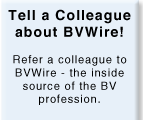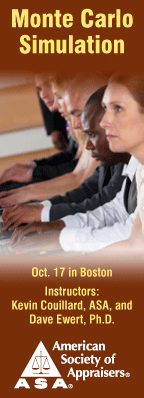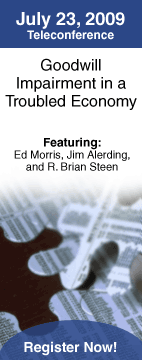| Three ‘trick’ questions that every litigation expert will hear
Expert witness work takes a thick skin and profound preparation, especially for those who may not have racked up a lengthy resume of court appearances and professional publications. Whether you’re an experienced expert—who’s testified on everything from complex economic damages in business disputes to the appraisal of marital assets in divorce—or you’re just starting to lay the foundation for a litigation consulting practice, the following questions are going to come up during deposition or trial. “You will get them,” says Brent McDade (Decosimo Advisory Services, Memphis, TN), who presented a “Mock Deposition for BV Engagements” at the recent NACVA/IBA 2009 Joint Consultants’ Conference. “And you have to be able to answer them.”
1. Have you ever read Shannon Pratt’s books? Valuing a Business: The Analysis and Appraisal of Closely Held Companies and other BV treatises are “must-reads” for any appraiser. But once the litigation expert answers “yes” to this question, the opposing attorney cites a potion of the text that contradicts the witness’ opinion. “We have all read a number of books on business valuation,” McDade says, providing a possible response. “They reflect the opinions of the author and the body of professional knowledge at the time they were written—and opinions change over time.” Ask to read the text where the quote was taken from and take a moment to prepare any further response that explains your opinion only. “Don’t get set up for the trap of comparing an ‘authoritative treatise’ to your analysis,” McDade advises. “Anything can be taken out of context.”
2. What’s on your website and brochures? “Know your own stuff,” including what you said in that CLE class you taught or the last time you testified in court. “Review that article you wrote in 1999. Do not create biased marketing materials.” And make sure that your website does not disqualify you in any way.
3. Who is this person who worked on your report? “Know your employees,” McDade says. Know their experience, credentials, length of time working at the firm, and their supervisors. Most importantly, know what they contributed to the report and whether you will have to disclose them as potential witnesses under the applicable rules of civil procedure.
For more questions that could trap even successful litigation experts—plus dos and don’ts for every deposition and trial appearance—look to a future fall issue of Business Valuation Update™.
PCAOB continues to highlight goodwill/impairment issues
The most recent audit inspection reports by the Public Company Accounting Oversight Board (PCAOB) emphasize the importance of recognizing, testing, and accounting for impairments of goodwill under FAS 142, Goodwill and Other Intangible Assets, as amended. For instance, in one of its inspections of a large accounting Firm (July 9, 2009), the PCAOB notes:
In this audit, when reviewing the issuer's assessment of goodwill for impairment, the Firm failed to test the revenue and expense projections, including the underlying assumptions, used to estimate the fair value of the issuer's largest reporting unit. In addition, the Firm failed to evaluate whether certain intercompany payables were appropriately included in the carrying amount of the reporting unit…
Similarly, in its latest summary of 2004, 2005, 2006, and 2007 Inspections of Domestic, Annually Inspected Firms, (December 15, 2008), the Board found generally that:
Inspection teams observed instances of inadequate testing by firms of fair value estimates in connection with firms' evaluation of the possible impairment of goodwill and other long-lived assets. The inspectors observed instances where firms had not tested the reasonableness of management's significant assumptions and the underlying data that the issuers had used in valuation models. As a result, the auditors did not have sufficient evidence to conclude on the issuers' estimates of fair value. For example, the inspectors identified instances where significant assumptions, such as the future revenue growth rate, operating margins, discount rates, and terminal values, were either not tested at all, or were tested only through discussions with management. In some of these situations, management's assumptions were that revenues would increase significantly in the near future despite evidence to the contrary, such as recent declining revenue trends or known increases in competition in the issuer's industry. Inspection teams also observed instances where firms had not challenged management's conclusions that assets did not need to be tested for impairment, despite evidence of impairment indicators…
Don’t miss this opportunity to nail down all the important impairment issues. Given the increasing complexity of accounting for goodwill impairment during these volatile financial times, valuation analysts will want to tune into BVR’s next teleconference, “Goodwill Impairment in a Troubled Economy,” featuring Ed Morris, Jim Alerding, and Brian Steen, which takes place tomorrow, Thursday, July 23 at 10:00am PT/1:00pm ET. Attendees will receive two CPE credits. To register, click here.
Proving reasonable royalty rate needs credible expert and data
The owner of several medical technology companies developed a patented drug to treat sepsis. He assigned all manufacture and marketing rights to another company, which failed to run clinical trials and perform other conditions of the agreement. In a suit for damages, the patent owner was ready to testify that but for the defendant’s breach, he would have found a corporate partner—a “major pharmaceutical company”—to oversee the details and costs of conducting the necessary trials and “walking the product through the FDA clearance process.” The drug would have immediately captured 50% of the market and the owner would have realized “great profits,” including a 5% royalty on all future sales totaling $42 million.
The defendants moved to preclude the owner, a lay witness, from presenting what amounted to expert damages testimony, and in Von Der Ruhr v. Immtech International Inc., 2009 WL 1888986 (June 30, 2009), the federal district court agreed, as did the U.S. Court of Appeals for the Seventh Circuit. ”In the realm of lost profits, lay opinion testimony is allowed in limited circumstances,” the court explained: when the witness has particularized and personalized knowledge (for example, the owner of an established firm with a documented history of profits may testify as to his/her expectations of continued profitability).
Here, the patent owner had no personal experience with obtaining a corporate licensing agreement for a pharmaceutical. He had never brought a drug to market or made a profit from a drug; and he’d never used licensing agreements to commercialize his prior medical products. Most important, he lacked any expertise or data to support his claims that the new drug would have captured 50% of the existing market and commanded a 5% royalty fee. The plaintiff should have offered ”qualifying experts [and] true market analysis,” the court concluded, in a case that will be available at BVLaw™, the abstract in the September 2009 Business Valuation Update™.
Perhaps the plaintiff could have used ktMINE™, an interactive IP database that provides direct access to royalty rates, source licensing agreements, and detailed agreement summaries. With precise functionality, including the ability to search by agreement type, industry, and other key criteria, ktMINE lets the user quickly find and analyze market comparables from over 13,000 public royalty rate, licensing, and lump sum agreements. For more information, to request a demo, or to purchase a 2-day pass for $500, click here.
IASB proposes two-part solution to troubled financial assets
Last week (July 14, 2009) the International Accounting Standards Board (IASB) published “Financial Instruments: Classification and Measurement.” These proposals will form part of the IASB’s “comprehensive review of financial instrument accounting,” the Board says, in a related release. The proposals will:
- significantly reduce complexity and make it easier for investors to understand financial statements;
- address how financial instruments are classified and measured; and
- answer concerns raised by interested parties during the financial crisis (e.g., eliminating the different impairment approaches for available-for-sale assets and assets measured using amortized cost).
Critics are already weighing in. “Rewriting laws in a hurry is never a great idea, but that is exactly what the International Accounting Standards Board…has been forced to do,” says a recent article in the Economist:
IASB’s proposed solution…is to put all financial assets into two buckets. Loans and securities which share the characteristics of loans—in other words, assets that derive their value only from interest and repayment of principal—will be held at cost, provided banks can show they will hold them for the long term. Everything else, including equities, derivatives and more complicated securities, will be held at fair value. Companies will be allowed to start applying the new rules from the end of this year, and will be obliged to by 2012.
“This is far simpler than the existing system,” the article adds. “But according to one bank’s finance chief, defining the boundary between the two types of assets is likely to prove tricky.” The IASB “still needs to be on its guard,” the Economist observes, in a related story. “First, it must police the boundary between the two categories with a big stick….Second, IASB must ensure that investors can still find out the market price of any asset being carried at cost—a far better indicator of many assets’ toxicity than managers’ opinions.”
The Board is currently inviting comments on the exposure draft by September 14, 2009; a copy is available on the “Open for Comment” section at www.iasb.org.
IVSC Expert Group announces new agenda
Following its inaugural meeting this month, the International Valuation Standards Council’s (IVSC) Expert Group on Financial Instruments has announced its initial work program, which will address the “lack of standardization and transparency in the valuation process,” according to a July 20, 2009 release. “The Group will provide input…to rewrite the International Valuation Standards to ensure that these adequately address concerns that have arisen over the valuation of financial assets and liabilities, particularly in the aftermath of the global financial crisis.” The Group will also:
- Identify the need for guidance on resolving some of the specific valuation issues that have arisen in the financial markets;
- Produce a discussion paper to examine the suitability of different valuation methods for various situations;
- Begin a project to identify and measure liquidity premiums (“a controversial area of practice at present”); and
- Review the impact of recent reports by the FASB and the IASB to determine whether to develop further valuation guidance in this area.
The next meeting of the group is in October. For further information, visit www.ivsc.org.
Allen steps down after two active years on ASA BVC
At the conclusion of the most recent meeting of the American Society of Appraiser’s Business Valuation Committee on Sunday July 12, 2009, the two-year term of Chair Terry Allen, CPA/ABV, ASA, officially ended. Among Allen’s many accomplishments:
- International growth of the BV profession. The ASA’s BV Committee has been an international leader in best practices and standards for the BV profession. “I am often asked why international involvement is important to members who practice only in the U.S.,” Allen says, in her last “Note from the Chair” (ASA E-Letter, July 15, 2009). International involvement has enhanced the ASA credential, and as the U.S. moves towards international accounting standards, appraisers will need to have a strong voice in their development.
- CICBV proposal. As previously reported in the BVWire™, the ASA is currently considering a proposal to form an “organization of organizations” with the Canadian Institute of Chartered Business Valuators (CICBV). “The purpose of this organization will be to promote global best practices in the BV profession,” Allen says. The ASA Board of Governors will vote in August or September on whether to pursue this joint venture; her assessment of its advantages and disadvantages appears in an earlier E-Letter.
- Education. “Education has been the issue of greatest importance to me during my 11 years on the BV Committee,” Allen says, including the development of courses focusing on the valuation of intangible assets for financial reporting purposes.
In addition, Allen has worked hard on the advancement of government relations, the credentialing of ASA members, and the continued sponsorship of top-notch professional conferences—such as the 2nd Annual Summit on Business Valuation in Divorce in Chicago on September 22-25; and the 28th Annual ASA BV Conference in Boston on October 19-21. Congratulations to Allen on completing her successful tenure, and kudos to new BV Committee Chair, John Barton, as well as Bill Quackenbush, Vice Chair, Linda Trugman, Secretary, and Mark Penny, Treasurer. “I am confident that John and the other new officers will do a great job,” Allen tells the ‘Wire. “I will still be on the BV Committee for two more years, but only to assist its new leaders if they wish.”
To ensure this email is delivered to your inbox,
please add editor@bvwire.com to your e-mail address book.
We respect your online time and privacy and pledge not to abuse this medium. To unsubscribe to BVWire™ reply to this e-mail with 'REMOVE BVWire' in the subject line or click here. This email was sent to %%emailaddress%%
Copyright © 2009 by Business Valuation Resources, LLC
BVWire™ (ISSN 1933-9364) is published weekly by Business Valuation Resources, LLC
Editorial Staff | Advertise in the BVWire | Copyright Notice
|




